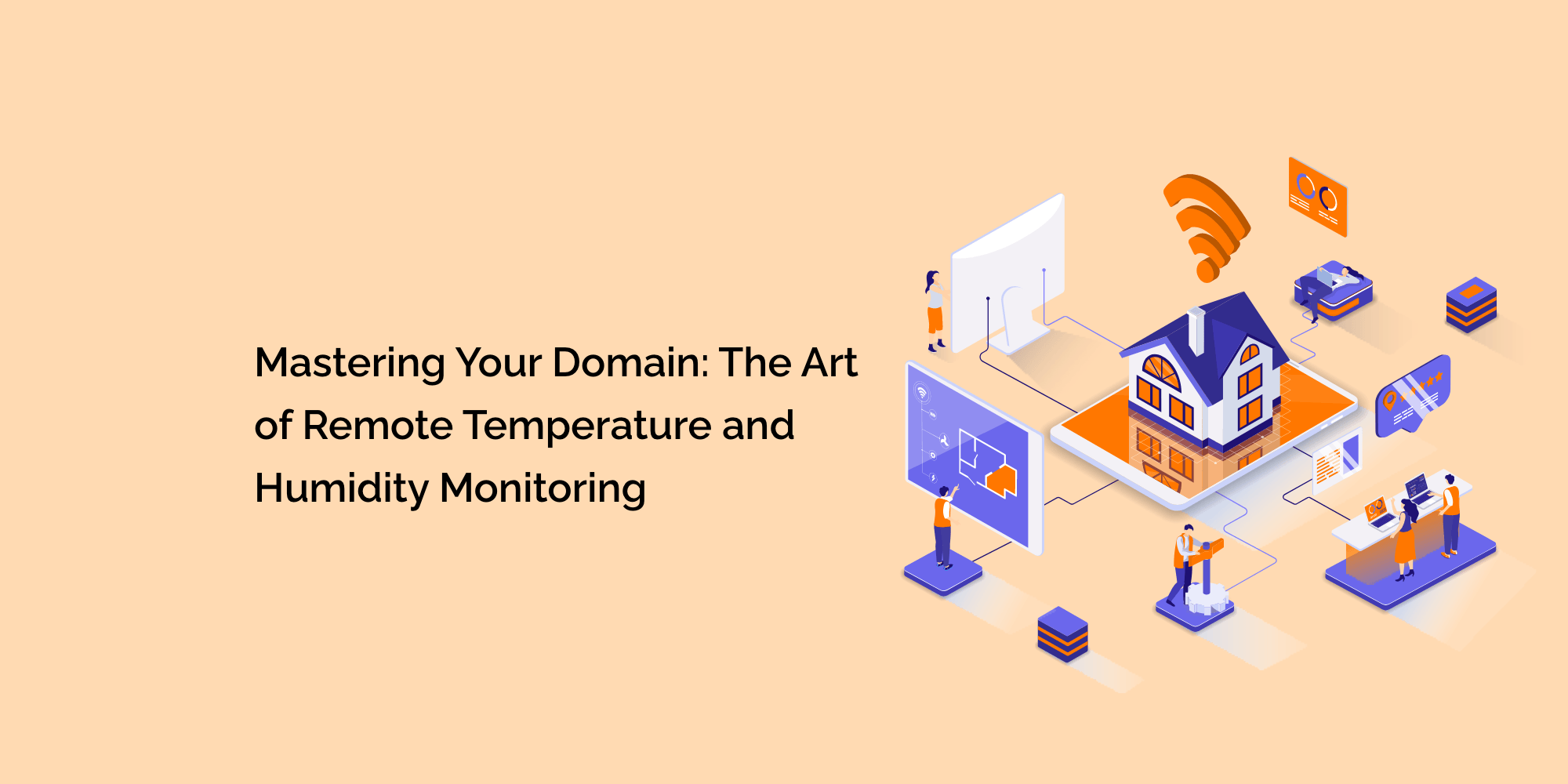In our interconnected world, technology continues to bridge the gap between what we can monitor and control remotely. One such area that has seen remarkable advancements is the field of remote temperature and humidity monitoring.
From ensuring optimal conditions for perishable goods during transit to maintaining a comfortable environment in your smart home, remote monitoring has become an indispensable tool.
In this blog post, we'll delve into the art of remote temperature and humidity monitoring, exploring its applications, benefits, and the technologies that make it all possible.
Understanding the Importance of Temperature and Humidity Monitoring
Temperature and humidity are two fundamental factors that can greatly influence various processes and environments. From industrial applications like manufacturing and storage to critical sectors like healthcare and agriculture, maintaining the right levels of temperature and humidity is crucial. A slight deviation from the ideal conditions can lead to spoilage, degradation of products, or even compromise the safety of sensitive materials.
Applications of Remote Temperature and Humidity Monitoring
-
Supply Chain Management: In the realm of logistics, maintaining the appropriate temperature and humidity is vital for transporting perishable goods like food, pharmaceuticals, and chemicals. Remote monitoring allows companies to track these conditions in real-time, ensuring the quality and safety of the products being transported.
-
Healthcare Facilities: Hospitals and clinics rely on precise temperature and humidity control to protect sensitive medical equipment and maintain hygienic conditions. Remote monitoring helps prevent equipment malfunction and ensures optimal storage conditions for medications and lab samples.
-
Smart Agriculture: For agricultural operations, monitoring temperature and humidity remotely helps farmers ensure the well-being of their crops and livestock. Greenhouses and animal shelters can be fine-tuned for maximum productivity and animal comfort.
-
Data Centers: In the digital age, data centers host a vast amount of sensitive information and equipment. Maintaining a controlled environment is essential for preventing hardware failures and data loss. Remote monitoring systems provide real-time insights to prevent any potential disasters.
Benefits of Remote Monitoring
-
Real-time Alerts: Remote monitoring systems can send alerts via SMS, email, or mobile apps when temperature and humidity levels deviate from the preset range. This immediate notification allows for swift corrective action, minimizing potential damage.
-
Cost Savings: By closely monitoring temperature and humidity remotely, businesses can avoid costly losses due to spoilage, equipment failures, and energy waste. Predictive analytics from collected data can also help optimize resource utilization.
-
Regulatory Compliance: Industries such as pharmaceuticals and food production must adhere to strict regulatory standards. Remote monitoring provides accurate records of conditions, ensuring compliance and facilitating audits.
-
Data-Driven Insights: Remote monitoring systems collect vast amounts of data over time. This data can be analyzed to identify trends, make informed decisions, and optimize processes for better efficiency.
Technologies Enabling Remote Monitoring
-
Wireless Sensors: Battery-powered wireless sensors are placed in the monitored environment to collect data. These sensors communicate with a central hub or cloud platform, providing real-time readings.
-
Internet of Things (IoT): IoT technology plays a crucial role in remote monitoring. Sensors and devices are connected to the internet, enabling data transmission and remote control.
-
Cloud Computing: Collected data is sent to cloud-based platforms for storage and analysis. This allows users to access information from anywhere with an internet connection.
-
Machine Learning and Analytics: Advanced analytics tools, including machine learning algorithms, can process the collected data to provide insights, predict trends, and recommend actions.
Conclusion
In conclusion, the art of remote temperature and humidity monitoring has revolutionized how we manage our surroundings. From maintaining product quality during transport to safeguarding critical equipment, the applications are vast and impactful. With the continuous advancement of technology, remote monitoring systems are becoming more accessible and efficient, allowing businesses and individuals to master their domains and ensure optimal conditions, no matter the location.








